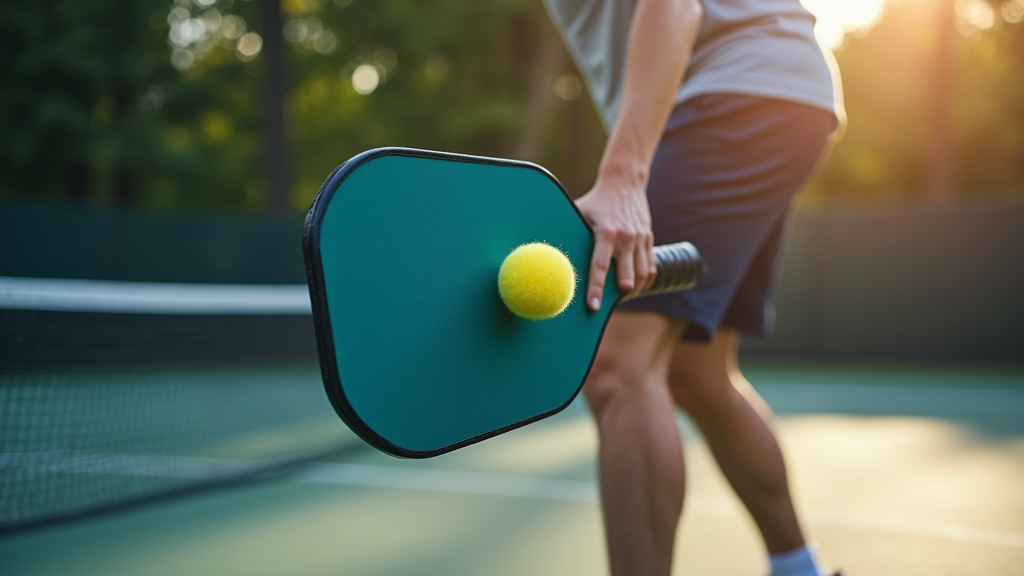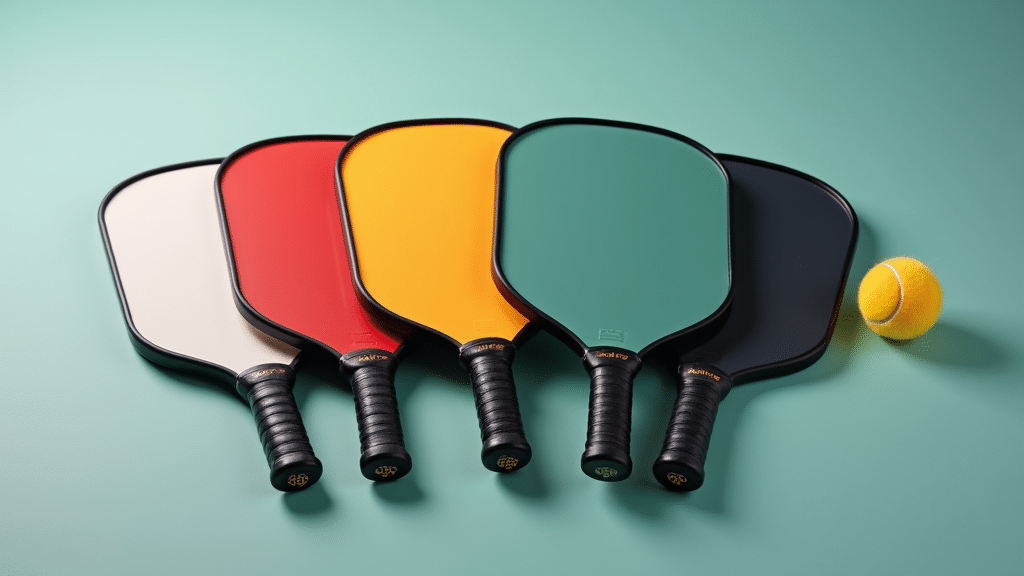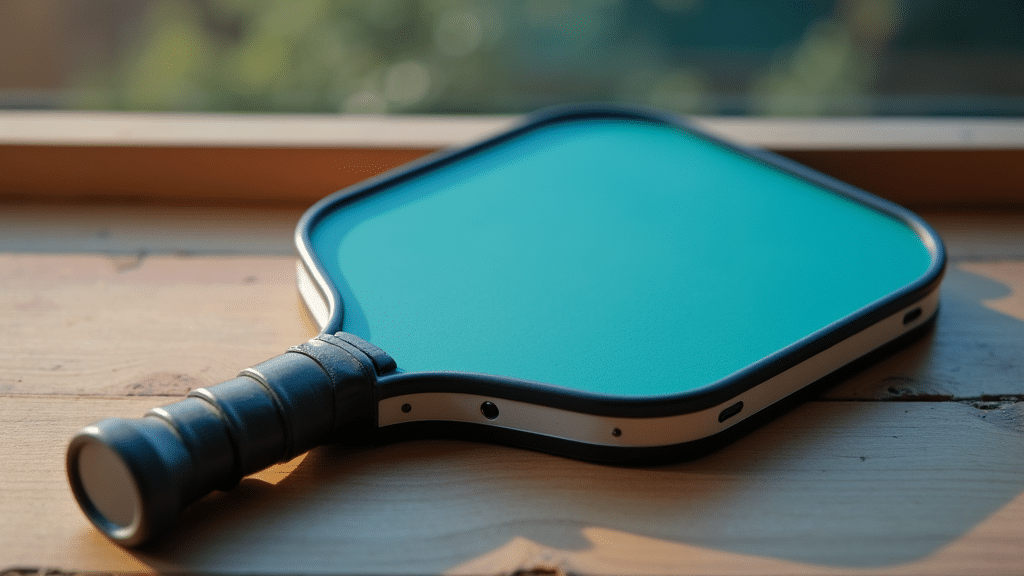Table of Contents
- Understanding the Pickleball Paddle Swing Weight Outline
- Understanding Pickleball Paddle Swing Weight Outline
- Key Definitions: Pickleball Paddle Swing Weight Concepts
- Core Principles of Pickleball Paddle Swing Weight
- Essential Components Influencing Pickleball Paddle Weight
- Weight Distribution: Key Feature of Paddle Outline
- Material Composition & Length: Secondary Paddle Aspects
- Pickleball Paddle Swing Weight Measurement Variations
- Detailed Guide to Finding Your Ideal Pickleball Paddle Swing Weight
- Materials for Pickleball Paddle Swing Weight Assessment
- Initial Setup for Pickleball Paddle Weight Selection
- Important Considerations for Pickleball Paddle Testing
- Step-by-Step Process for Evaluating Paddle Swing Weight
- Best Practices for Pickleball Paddle Swing Weight Selection
- Common Mistakes to Avoid When Choosing Paddle Weight
- Expert Tips to Fine-Tune Pickleball Paddle Swing Weight
- Optimization Methods Based on Playing Style
- Troubleshooting Common Pickleball Paddle Weight Issues
- Selecting the Right Paddle: Swing Weight Considerations
- Pickleball Paddle Swing Weight Outline: Common Questions
- Concluding Thoughts on Pickleball Paddle Swing Weight Outline
Understanding the Pickleball Paddle Swing Weight Outline
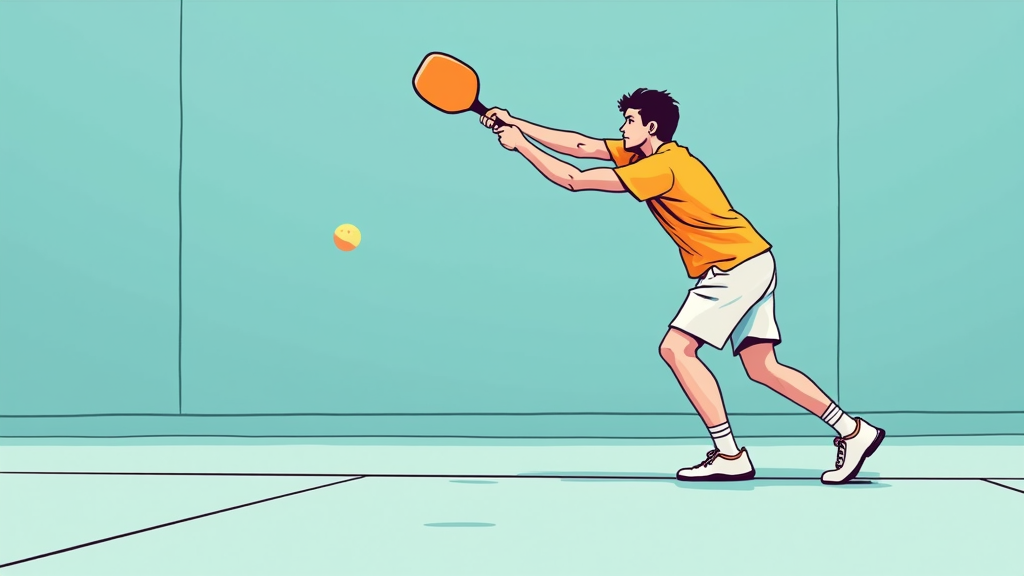
Swing Weight: Definition and Why It Matters
Swing weight in pickleball refers to how heavy a paddle feels when you swing it. It’s not just about the paddle’s overall weight but how that weight is distributed throughout the paddle. A paddle with a higher swing weight will feel heavier and more difficult to maneuver, while a paddle with a lower swing weight will feel lighter and easier to swing quickly.
Swing weight is typically measured in kg*cm2. Paddles are often categorized based on their swing weight: less than 110 kg*cm2 is considered low, 110-120 kg*cm2 is mid-range, and over 120 kg*cm2 is high.
Understanding swing weight is crucial because it directly impacts your shot control and overall performance on the court. It influences the amount of power you can generate, how easily you can maneuver the paddle for quick reactions, and how much endurance you’ll have during longer matches.
Historical Perspective on Pickleball Paddle Weight Distribution
In the early days of pickleball, there was less emphasis on swing weight as paddle technology was still in its infancy. Paddles were simpler in design, and manufacturers didn’t provide detailed specifications like swing weight. Players primarily focused on the overall weight and grip size.
More recently, advancements in materials and manufacturing techniques have led to a greater understanding and focus on swing weight. Paddle manufacturers now routinely provide swing weight data, allowing players to make more informed decisions. Furthermore, adjustable weight systems are emerging, giving players the ability to customize the swing weight of their paddles to suit their individual preferences and playing styles.
Key Insights: Mastering Paddle Swing Weight Dynamics
This guide will help you understand core concepts such as swing weight, twist weight, and static weight, and how weight distribution affects the overall feel of a pickleball paddle. You’ll learn to differentiate between these measurements and understand their importance.
We’ll also cover practical applications, such as choosing a paddle based on your playing style and how to adjust the swing weight of your existing paddle using weight tape. This knowledge will empower you to optimize your paddle for better performance and enjoyment on the pickleball court.
Understanding Pickleball Paddle Swing Weight Outline
Key Definitions: Pickleball Paddle Swing Weight Concepts
Swing weight, static weight, and twist weight are fundamental concepts in understanding how a pickleball paddle performs. Swing weight refers to how heavy the paddle feels when you swing it, which is significantly influenced by the distribution of weight within the paddle. Static weight, on the other hand, is the actual weight of the paddle when it’s at rest, typically measured in ounces or grams using a scale. Lastly, twist weight describes the paddle’s resistance to twisting when the ball makes contact off-center. A higher twist weight generally results in more consistent shots, even on mishits.
Core Principles of Pickleball Paddle Swing Weight
The core principle to remember is that a higher swing weight generally translates to more power behind your shots but can reduce maneuverability and reaction time. Conversely, a lower swing weight offers greater control and quicker reactions at the net but may sacrifice some power. Twist weight is crucial for maintaining shot consistency, minimizing the impact of off-center hits on your accuracy and control.
Essential Components Influencing Pickleball Paddle Weight
Several components contribute to a pickleball paddle’s swing weight, static weight, and twist weight. These include the paddle material, such as composite, carbon fiber, or wood, and the paddle shape, whether it’s elongated or wider. Additionally, the grip size plays a role in how the paddle feels and performs.
Weight Distribution: Key Feature of Paddle Outline
Weight distribution is a primary aspect of pickleball paddle design, categorized as head-heavy or head-light. The balance point, which is closely related to weight distribution, also significantly affects how the paddle feels during play. Head-heavy paddles tend to have a higher swing weight, while head-light paddles have a lower swing weight, influencing power and maneuverability.
Material Composition & Length: Secondary Paddle Aspects
Beyond weight distribution, the material composition and paddle length are secondary aspects that influence swing weight. Different materials offer varying densities and stiffness, affecting the overall weight and balance. Paddle length can impact reach and leverage, indirectly affecting the perceived swing weight.
Pickleball Paddle Swing Weight Measurement Variations
Swing weight is often categorized into low, mid, and high ranges, allowing players to choose a paddle that suits their playing style and preferences. While twist weight measurements are less commonly advertised, they are an important factor to consider for players seeking consistent performance across all areas of the paddle face. Understanding these variations can help you select a paddle that optimizes your game.
Detailed Guide to Finding Your Ideal Pickleball Paddle Swing Weight
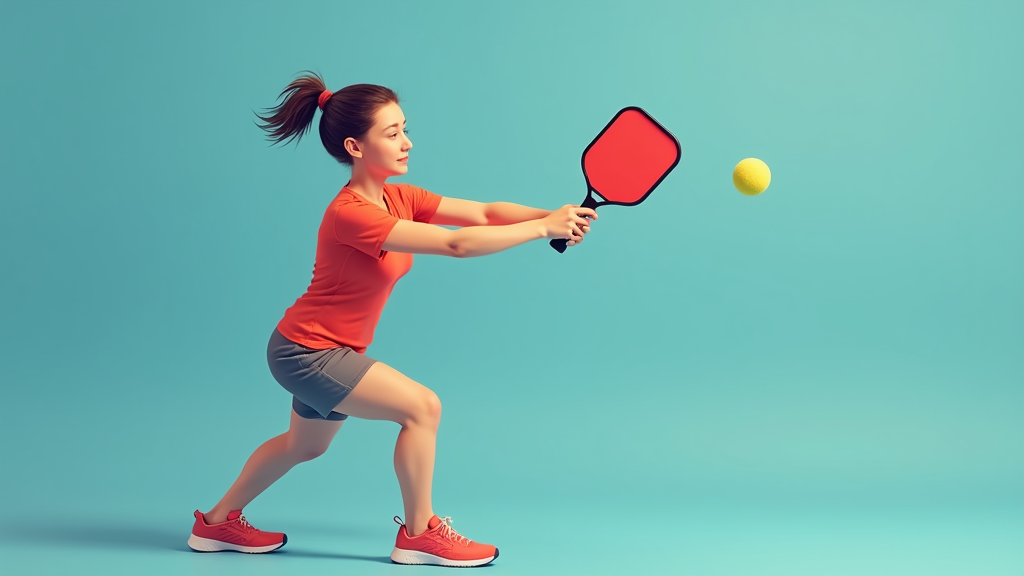
Materials for Pickleball Paddle Swing Weight Assessment
Before diving into the process of assessing pickleball paddle swing weight, it’s essential to gather the necessary materials. This will ensure a smooth and effective evaluation. You’ll need access to a variety of pickleball paddles with different swing weights. A swing weight chart, if available, can be a helpful reference. Additionally, weight tape can be useful for making adjustments to swing weight during testing.
- Access to different pickleball paddles.
- Swing weight chart (if available).
- Optional: Weight tape for adjustments.
Initial Setup for Pickleball Paddle Weight Selection
The initial setup involves understanding your playing style and physical capabilities. Identify whether you prioritize power, control, or speed in your game. Also, consider your strength and endurance levels, as these will influence the ideal swing weight for you. Your physical capabilities play an important role in the pickleball paddle weight selection.
- Identify your playing style (power, control, speed).
- Determine your physical capabilities (strength, endurance).
Important Considerations for Pickleball Paddle Testing
When evaluating paddles, pay attention to grip size and comfort, as these factors significantly impact your ability to control the paddle. Also, consider the paddle material and its durability, ensuring it can withstand regular use. These considerations will help you narrow down your choices and find a paddle that suits your needs.
- Grip size and comfort.
- Paddle material and durability.
Step-by-Step Process for Evaluating Paddle Swing Weight
The evaluation process involves testing paddles with varying swing weights to find the one that best suits your style. Start by determining your primary playing style: do you prefer power shots, controlled dinks, or quick reactions at the net? Then, test paddles with different swing weights (e.g., <110 SW, 110-120 SW, >120 SW). Swing each paddle side to side to feel the difference in weight distribution. Play a game with each paddle to assess its performance in real-game situations. Finally, choose the paddle that best matches your style and feels most comfortable in your hand.
- Step 1:Determine your playing style (power, control, speed/reaction).
- Step 2:Test paddles with varying swing weights (e.g., <110 SW, 110-120 SW, >120 SW).
- Step 3:Swing each paddle side to side to feel the difference.
- Step 4:Play a game with each paddle to assess performance.
- Step 5:Choose the paddle that best matches your style and feels comfortable.
Best Practices for Pickleball Paddle Swing Weight Selection
To ensure you make the right choice, test multiple paddles and get feedback from other players. Pay attention to the balance point and weight distribution of each paddle, as these factors affect how the paddle feels in your hand. Getting feedback from other players can help you gain insights into the paddle’s performance from different perspectives.
- Test multiple paddles.
- Get feedback from other players.
- Consider the balance point and weight distribution.
Common Mistakes to Avoid When Choosing Paddle Weight
Avoid ignoring swing weight altogether and choosing solely based on static weight. Also, be mindful of your physical limitations and choose a swing weight that you can comfortably handle. Considering your physical limitations will prevent fatigue and potential injuries.
- Ignoring swing weight altogether.
- Choosing solely based on static weight.
- Not considering your physical limitations.
Expert Tips to Fine-Tune Pickleball Paddle Swing Weight
For advanced players, use weight tape to fine-tune the swing weight of your paddle. Experiment with different grip positions to alter the perceived swing weight. Also, consider twist weight for off-center hits, which can affect the stability of the paddle.
- Use weight tape to fine-tune swing weight.
- Experiment with different grip positions to alter perceived swing weight.
- Consider twist weight for off-center hits.
Optimization Methods Based on Playing Style
For power players, add weight towards the head of the paddle to increase swing weight and generate more force. For control players, ensure a balanced swing weight for optimal maneuverability. For speed players, choose a head-light paddle with low swing weight for quicker reactions. Optimizing your paddle based on your playing style can enhance your performance on the court.
- For power players: Add weight towards the head of the paddle.
- For control players: Ensure a balanced swing weight.
- For speed players: Choose a head-light paddle with low swing weight.
Troubleshooting Common Pickleball Paddle Weight Issues
If the paddle feels too heavy, reduce swing weight by removing weight or choosing a lighter paddle. If the paddle lacks power, increase swing weight by adding weight to the head. If your shots are inconsistent, check twist weight and consider a paddle with higher torsional stability. Addressing these issues can improve your consistency and overall performance.
- Paddle feels too heavy: Reduce swing weight by removing weight or choosing a lighter paddle.
- Paddle lacks power: Increase swing weight by adding weight to the head.
- Shots are inconsistent: Check twist weight and consider a paddle with higher torsional stability.
Selecting the Right Paddle: Swing Weight Considerations
Paddle Weight Categories and Swing Weight Effects
Choosing the right pickleball paddle involves understanding how different weight categories affect swing weight and, consequently, your game. Paddles are generally classified into light, mid-weight, and heavy categories, each offering distinct advantages.
- Lighter Paddles (Under 8 ounces):These paddles offer superior agility and are ideal for players who prioritize fast reactions and quick volleys. The lower swing weight allows for quicker paddle movement, enhancing responsiveness at the net.
- Heavier Paddles (Over 8 ounces):Heavier paddles provide more stability and power, making them suitable for players who prefer powerful groundstrokes. The higher swing weight delivers more force behind each hit, but can also lead to fatigue over longer periods of play.
- Mid-Weight Paddles (Around 8 ounces):Mid-weight paddles strike a balance between power and control. They are a versatile option suitable for all-around players who want a mix of maneuverability and hitting power.
Matching Swing Weight to Your Playing Style
Your playing style should heavily influence your choice of pickleball paddle swing weight. Different styles benefit from different swing weights, so consider the following:
- Power Players:If you focus on power, opt for a paddle with a higher swing weight (above 120 SW) to maximize force and control in your shots.
- Control Players:Players who prioritize control should look for moderate to high swing weights (around 110-120 SW) to provide stability and precision in controlled shots.
- Speed and Reaction Players:For those who value speed and quick reactions, a lower swing weight (below 110 SW) will offer better maneuverability and faster paddle speed.
- Endurance Players:If you play long matches, a lower swing weight (below 110 SW) can minimize arm strain and fatigue, allowing you to maintain performance over time.
Personalizing Your Paddle: Testing Swing Weight and Feel
Ultimately, the best way to choose a paddle is through hands-on testing and personalization. Consider these factors:
- Test Multiple Paddles:Visit local pickleball shops or clubs to try out different paddles and assess their feel during play.
- Seek Expert Insights:Talk to other players and instructors to gather recommendations and insights on paddle swing weights.
- Consider Your Playing Style:Align your paddle choice with your preferred playing style, whether it’s finesse, power, or a combination of both.
- Grip Size and Material:Pay attention to grip size and material, as these can significantly impact comfort and control.
- Assess Overall Comfort:Choose a paddle that feels comfortable and natural in your hand, allowing for a confident and enjoyable playing experience.
Pickleball Paddle Swing Weight Outline: Common Questions
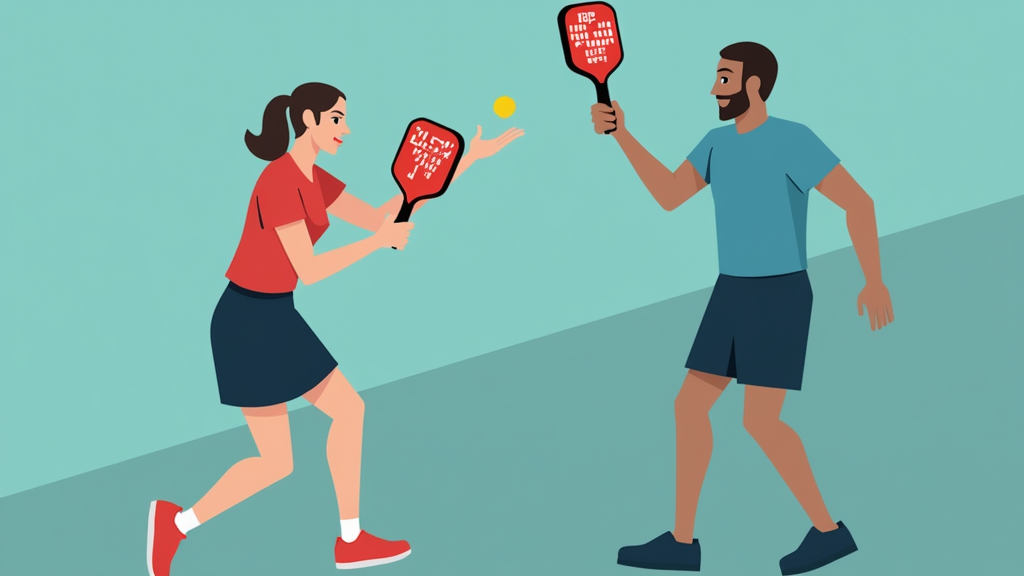
Swing Weight Effects on Pickleball Game Performance
Swing weight significantly influences various aspects of your pickleball game. It impacts shot control, power generation, maneuverability around the net, and even your endurance during longer matches. The ideal swing weight allows you to react quickly while still delivering powerful shots.
A higher swing weight generally translates to more power behind your shots, making it easier to drive the ball deep and put pressure on your opponents. However, it can also reduce your reaction time and make quick volleys more challenging.
Conversely, a lower swing weight offers enhanced maneuverability and faster reactions, which is beneficial for quick exchanges and defensive play. The trade-off is that you may sacrifice some power and find it harder to hit deep, penetrating shots.
Determining Your Ideal Pickleball Paddle Swing Weight
Finding the best swing weight is a personal journey. It involves testing different paddles and considering your playing style and physical capabilities. Don’t hesitate to solicit opinions from other players and coaches.
Consider your playing style. Are you an aggressive player who likes to drive the ball, or do you prefer a more finesse-oriented game? Your physical strength and endurance also play a role. If you’re not particularly strong, a lighter swing weight might be more comfortable.
Experiment with adding weight tape to different areas of your paddle to fine-tune the feel and adjust the swing weight to your liking. This allows you to customize the paddle to perfectly match your preferences.
Pickleball Paddle Swing Weight for Optimizing Performance
Selecting paddles that align with your personal playing style is crucial for optimal performance and enjoyment. A well-chosen swing weight can enhance your strengths and minimize your weaknesses on the court.
Striking a balance between swing weight and twist weight (resistance to twisting on off-center hits) is also important. A paddle that is stable and doesn’t twist easily will provide more consistent results, even on mishits.
Experiment with adjusting the weight distribution of your paddle to further enhance your strengths. For example, adding weight to the head of the paddle can increase power, while adding weight to the handle can improve maneuverability.
Concluding Thoughts on Pickleball Paddle Swing Weight Outline
Recap: Importance of Pickleball Paddle Swing Weight
In summary, the swing weight of your pickleball paddle is a critical factor that significantly impacts your performance on the court. It’s not just about the overall weight of the paddle, but how that weight is distributed. A paddle with a higher swing weight will generally provide more power, while a paddle with a lower swing weight will be easier to maneuver quickly.
Balancing Power and Control: Swing Weight Considerations
Remember that finding the right balance between power and control is key. Your ideal swing weight will depend on your playing style, your physical strength, and your reflexes. A heavier swing weight might be great for powerful drives, but it could also slow down your reaction time at the net. Experimentation is crucial to find what works best for you.
Paddle Selection: Testing Various Swing Weights
The best way to determine the ideal swing weight for your pickleball paddle is to test different paddles. Many retailers offer demo programs that allow you to try out various models before committing to a purchase. Pay attention to how the paddle feels in your hand, how easily you can generate power, and how quickly you can react to shots.
Optimizing Performance: Adjusting Weight Distribution
Consider also that you can sometimes adjust the weight distribution of your paddle using lead tape. Adding weight to the head of the paddle will increase the swing weight and potentially add power, while adding weight to the handle will decrease the swing weight and improve maneuverability. Experiment with small adjustments to fine-tune your paddle’s performance.
Resources: Further Exploring Pickleball Paddle Technology
To further your understanding of pickleball paddle swing weight and technology, explore resources from paddle manufacturers like Selkirk, Paddletek, and EngagePickleball. These companies often provide detailed specifications and explanations of their paddle designs. You can also find valuable information on websites like Pickleball Central and YouTube channels dedicated to pickleball equipment reviews.

